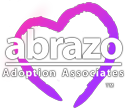Being in a state like Texas, there’s a lot to unpack when one thinks about open adoption boundaries and barriers.
Texas adoption laws allow for open adoptions, yet that any open adoption agreements entered into in Texas are not legally-enforceable. (So yes, parents can enter into voluntary contracts to keep in touch but the courts won’t get involved if promises aren’t kept.) This sends a mixed message, at best, and sets adoption consumers (especially birthparents) up for heartache, at worst, if promises are made but not kept.
The best adoption agencies advise clients of this upfront, but don’t stop there. They go the extra mile to help ensure that connections get kept, too. (Perhaps what’s needed is more education all around, to help both lawmakers and adoption consumers alike to understand why open adoption is so important for the welfare of the child/ren being adopted?)
Open Adoption
Open adoption means that placing and adopting parents commit from the start to exchanging identifying information, getting to know each other in person, and continuing to see each other and stay in direct contact across the adoptee’s lifespan.
Abrazo is one of the few adoption agencies that traditionally (barring the Covid pandemic) insists on getting to know adopting parents in person, prior to accepting them into the placement program. At one of Abrazo’s Parents of Tomorrow orientation weekends long ago, an infertile couple was asked what drew them to Abrazo’s open adoption program. The husband eagerly responded “we want a healthy baby as soon as possible, of course.” When the director gently reminded him that isn’t the actual purpose of an open adoption, he added “well, my wife and I keep our circle very small, so we don’t let others in.”
But therein lies the problem: to make room for whatever child you are adopting, you must also make room for that child and their birthparent/s. Adoptees are not blank slates, contrary to the misguided assumptions of those who assume otherwise. They are forever genetically-linked and biologically-related to their families of origin. Put simply: every adoptee has their own people who belong to them. And no legal surrender or other adoption document will ever change that fact.
Boundaries
Healthy adoptive families make room for this truth. They expand their circle to include both the adoptee and his or her people, to whatever extent benefits the adoptee, and with the understanding that there will necessarily be boundaries, as needed, since every healthy relationship includes those.
Healthy birthparents also make room for this truth, even in the midst of post-placement grief. They expand their circle to include the adoptee and his or her adoptive parents, and also sometimes their other children or relatives, as appropriate, with appropriate boundaries, since every healthy relationship includes those.
Boundaries are openly-communicated limits that help everyone involved know the guidelines. These are needed in any interpersonal relationship. The specifics may vary between households and adoptions, but a few common open adoption boundaries include the following:
* Non-emergency phone calls or texts should always occur between 9 am and 9 pm.
* Visits and visitors must always be confirmed and cleared in advance (no surprises!)
* Nobody (bp, ap or adoptee) should ever visit while drunk or high.
* All parents must put the adoptee’s best interests first in all contacts.
* Initial meetings should occur in public places where all can feel comfortable.
Always remember that the open adoption agreement is between the parents– so it is the responsibility of the birthparents and adoptive parents to work out the details of their contact and communication. (The adoptee had no part in those original decisions and must not be put in the middle if either party is in conflict.) Adult adoptees likewise have the right to choose for themselves whether to remain in relationship or not.
Barriers
Barriers arise in open adoption if/when communication breaks down, or parties fail to honor their promises. Your adoption provider should always be willing to help reconnect you, if contact’s been lost, or to refer you to other professionals who can assist. Misunderstandings can arise in any authentic relationship so try to never let miscommunications destroy open adoption relationships. It’s okay for both sides to agree to take time-out from relationships that don’t feel healthy. But do find other ways to keep in touch, if possible, so that the benefits of openness are not entirely lost to the adoptee.
Some of the common barriers that tend to complicate open adoption relationships can be distance, cultural differences or language limitations, economic conditions, adoptee resistance to contacts, parental divorce or breakups, lack of common values, dishonesty &/or shared interests, lifestyle differences, and safety/health concerns. While reading a list like this may make open adoption seem impossible, know that most of these barriers can be easily managed with care and commitment.
One of the most insurmountable barriers in any open adoption is death. Adoptive parents should include directions in their will as to how their child’s assigned guardians are to maintain the open adoption relationship (and with whom) in case of emergency. Similarly, in the event of a birthparent’s untimely passing, another birthrelative can sometimes be enlisted to take over the open adoption contact, to maintain the adoptee’s connection with his or her birthfamily.
Still, the barrier that seems to interfere most often with open adoption relationships is fatigue. Birthparents often feel hesitant to “interfere” by reaching out for contact too often. Yet adoptive parents sometimes get weary of being the ones who are most often responsible for initiating all the contact. The fix is for both sets of parents to be equally invested in the connection, and to express appreciation for each other periodically– even when the adoptee may not feel particularly grateful for either of them.
Open adoption boundaries and barriers can be trying at times, but for those who truly care about the adoptee, the effort it takes to make these things work is never, ever wasted.


